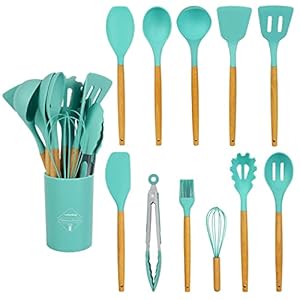
I grew up in Warri, on the southern coast of Nigeria, consuming, consuming, and having fun with Nigerian meals. Whereas I cherished our meals, I hardly considered it as worthy of celebration, and boy, did I take it as a right till it was nowhere to be discovered. It wasn’t till the late Nineteen Nineties, after I was in my twenties at college in England, that I understood meals as greater than consuming―not simply as a method to fill my stomach, however as a technique to soothe my soul, join with residence, and expertise a way of belonging.
By the point I moved again residence to Warri after commencement, my appreciation for Nigerian meals had grown. And nonetheless, I had no concept that edible traces of Nigerian delicacies existed throughout the Black Atlantic, all through the Caribbean islands and Latin America, because of the transatlantic slave commerce.
Critical Eats / Maureen Celestine
I moved to The Netherlands for work as an exploration geologist in 2007. A number of years later, in 2009, my Brazilian supervisor, Santiago, shared a narrative about Afro-Brazilian acarajé—a fritter that could be a direct descendant of the Nigerian bean fritter often known as akara. That singular dialog opened up a world of meals historical past, heritage, legacy, and analysis that continues to fascinate me. It’s motivated me to unravel, unearth, and doc all of the methods we, as human beings, are comparable—not simply folks of African descent, but additionally different cultures and cuisines the place there are connections, be they geographical or primarily based upon shared histories (e.g. Nigeria and India via British colonialism).
With that discovery, I had quite a few conversations about connections via meals. These conversations additionally had me trying inward―at residence, to our delicacies―attempting to grasp who we, as Nigerians, are and the way we eat. Broadly talking, a lot of the meals we eat every day are nationally acknowledged dishes with regional variations. There are recipes and components with clear origins from one a part of the nation which might be a part of the day by day lives of Nigerians all around the nation, so nationwide appears solely becoming to explain them.
Beef
Nigerian Egusi Soup Recipe
A creamy, nutty staple that varies from region to region
Totally different areas have variations of the identical dish. As an example, egusi soup (also referred to as agushi, egushi, egunsi) is beloved throughout the nation. The variations in regional variations embody how the egusi seeds are ready: uncooked or toasted, dry-milled or wet-ground, mild and creamy or thick with curd. The greens, herbs, and seasonings used are additionally distinctive to particular localities, however even with these alternative ways of getting ready the soup, it is all the time immediately recognizable with its signature concentrate on the creamy, nutty taste of the melon seed. You’ll discover this true for a lot of dishes throughout Nigeria—they take barely totally different form in every place whereas retaining their important character.
How a Nigerian Meal Is Structured
Nigerian meals tradition doesn’t function a number of programs. The principle dish is normally the star of the present, and relying on the time of day, could possibly be something from akara or moin moin to rice, beans, and cooked greens with stew. A lunchtime meal at residence would possibly seem like rice and stew with dodo and efo, or some mixture; or it is likely to be a soup with nuts, seeds, and greens served with a swallow, like eba or lafun, together with zobo or different drinks. At a celebration, you would possibly start with a plate of small chops like puff puff, then take pleasure in some jollof or fried rice with moin moin and dodo.
Benefit from the vary our palates embrace—candy, salty, smoky, umami, spicy, and the whole lot in between.
Benefit from the vary our palates embrace—candy, salty, smoky, umami, spicy, and the whole lot in between.
For ease, I’ve grouped the recipes right here into fritters and fried doughs; swallows; soups, stews, and sauces; rice; cooked greens; snacks; and drinks. They seize the framework of our delicacies, and nearly all of the 200-plus million folks in Nigeria would acknowledge most of them in a single type or one other. Contemporary fruit and greens, in abundance all yr spherical, are additionally the go-to for folks wanting a candy chunk.
Critical Eats / Maureen Celestine
I need to say although, these recipes are only a handful of the tons of of Nigerian dishes that exist and live and thriving throughout the nation. Nonetheless, they provide you some perception into what Nigerians eat; when, the place, and the way; from north to south and east to west. Benefit from the vary our palates embrace—candy, salty, smoky, umami, spicy, and the whole lot in between.
Fritters and Fried Doughs
Fried meals are extraordinarily well-liked throughout Nigeria, for each meals and snacks. Created from recent and fermented batters and doughs, you will discover them on the streets or at residence. Nonetheless, not all fried meals are of the deep-fried selection. Within the shallow-fried meals class, there’s masa, crunchy fermented rice desserts cooked in a particular pan known as a kasko; they may also be made with corn, wheat, semolina, and different cereals.
Critical Eats / Maureen Celestine
Puff puff is one in all many deep-fried, golden brown Nigerian treats. There are additionally buns leavened with baking powder as an alternative of yeast, and a number of other sorts of rolls, from fish to egg rolls—just like Scotch eggs in that the boiled eggs are dough-wrapped and deep-fried. And naturally, there’s akara, comprised of beans, which is as a lot a Saturday morning residence breakfast as it’s a avenue basic on a regular basis of the week.
Swallows
Swallows are day by day necessities for a lot of Nigerians. They’re gentle, cooked doughs, not designed to be eaten on their very own however as an alternative paired with soups and stews. Swallows may be made with a single ingredient or a sequence of components mixed, like cereals, roots, tubers, and greens.
Swallows are made in two alternative ways: The primary is by boiling, then working the cooked ingredient(s) right into a gentle, sticky dough (suppose mashed potatoes however stickier and stretchier, although solely these made with tapioca starch have that mochi-like stretch); the second is by cooking wonderful and coarse flours or meals in water into cohesive doughs, very similar to polenta or mashed potatoes with out butter or seasoning. Within the north of Nigeria, cereals like rice, millet, Guinea corn (sorghum), and corn are the commonest components in swallows; within the south, east, and west, swallows are usually comprised of root crops and greens like yams, plantains, candy potatoes, and breadfruit.
Critical Eats / Maureen Celestine
Eba and lafun are two swallows comprised of cassava meal. Regardless of having this ingredient in frequent, they’re fully dissimilar, each in look and style, attributable to their variations in processing. Whereas eba has a contact of grit, lafun is tremendous easy, due to the gelatinized high quality of its pure starches. Except for eba imoyo—a specialty of the Eko folks of Lagos—which is cooked in a seafood inventory, most swallows are cooked in water, and are neither sweetened nor salted in order that the flavour of the ingredient shines via.
Soups, Stews, and Sauces
Soups, stews, and sauces are the mainstay of Nigerian delicacies, from mild consuming broths like pepper soup to thick stews (which we name soups in Nigeria) like egusi and efo-riro and stew, a selected purple dish generally made with a puréed base of tomatoes, onions, and peppers, of which there are a lot of variations, together with obe ata. With a pot of stew or soup, there are such a lot of prospects, and you could possibly put a meal collectively pretty rapidly. Sauces are a mixture of meat curries—just like Japanese or Korean curries—to ofada sauce, an Indigenous purple sauce with bite-sized items of meat, plenty of iru (fermented seeds), and a sweet-hot pepper base.
Critical Eats / Maureen Celestine
Most soups and stews sometimes start with a seasoned inventory and quite a lot of plant, seafood, and animal proteins. This seasoned base is thickened with floor leafy greens, legumes, gums, nuts, and seeds. Soups are usually flavored with unrefined purple palm oil; fish powder or dried and floor crayfish; and inventory cubes for umami, which altogether ship complicated flavors. Conventional stews are sometimes made with a purple tomato-pepper base, however may also be made similarly to soups, or with dried thyme, vegetable oil, and a British colonial-era seasoning like curry powder.
These are eaten with quite a lot of dishes—rice, bread, or swallows, and cooked greens like yams, plantains, or candy potatoes which might be boiled, grilled, roasted, or fried. Stew generally is a dip for fried meals, or extra liberally spooned over rice and beans. Soups may be eaten on their very own or paired with swallows. Eba and egusi are private favorites, as is lafun with each efo and obe ata.
Rice
You’ll discover rice in all places in Nigerian delicacies—at residence, as avenue meals, and at events and celebrations. Most rice dishes may be paired with an assortment of sides, from white rice and stew with beans to dodo and jollof rice, or fried rice with moin moin and coleslaw. Jollof rice and Nigerian fried rice dishes are notably saved for particular events.
Nigerians love rice—long-grain rice particularly. And right here, it isn’t a aspect dish. As an alternative, it is the principle: fragrant varieties just like Thai Jasmine are utilized in swallows, and transformed or parboiled rice is served with stew or soups or used to make jollof and Nigerian fried rice.
Critical Eats / Maureen Celestine
My favourite sorts of rice are the indigenous, red-streaked sorts of oryza glaberrima, particularly these from Abakaliki (east), and Ekpoma (south). I like them for his or her candy taste and perfume when the rice is solely boiled, but additionally when it’s made into coconut rice (with recent, home made coconut milk)—that’s a top-10 in my style reminiscence. There’s additionally ofada rice, which is fermented and processed rice that fills the air with probably the most blue-cheesy pungence through the cooking course of, none of which interferes with the attractive, complicated, candy flavors on the plate and the palate. It’s served with ofada sauce.
Cooked Greens and Legumes
There are such a lot of greens that take the type of a foremost or aspect. They’re boiled, fried, roasted, cooked into thick stews, and extra, from plantains used in any respect levels (inexperienced and unripe to yellow-black and ripe, and even over-ripe) to yams, taro, and each common and candy potatoes. Fried plantains, often known as dodo, are all the time a crowd pleaser, as are fried yams. Put aside some stew to dip it in, plus some fried eggs to the aspect, and you’ve got a fast and satisfying meal.
Critical Eats / Maureen Celestine
Legumes are merely cooked and stewed, but additionally made into wraps, just like tamales. Beans are sometimes soaked, skinned, and pureed for dishes like akara, however are additionally scooped into ramekins or wrapped in broad leaves.
Snacks
There are a myriad of snacks, from recent fruit and greens—coconuts, corn, carrots, and cucumber are well-liked snacks subsequent to meaty dishes like suya—to meat pies, that are parcels of dough full of seasoned minced meat and baked to perfection; and chin chin, a snack of tiny cookie-cracker-crunchy bites, comprised of deep-fried, seasoned dough, and loved by the handful all yr spherical, however particularly at Christmas.
Drinks
Nigerians serve a bunch of each cold and warm drinks. There’s zobo (which you would possibly already be acquainted with as hibiscus tea), gentle drinks, non-alcoholic malt drinks, alcoholic beers and spirits, bitters, shandies, palm wine, and kunu, quite a lot of milky drinks comprised of tubers and cereals.
Trending Merchandise











